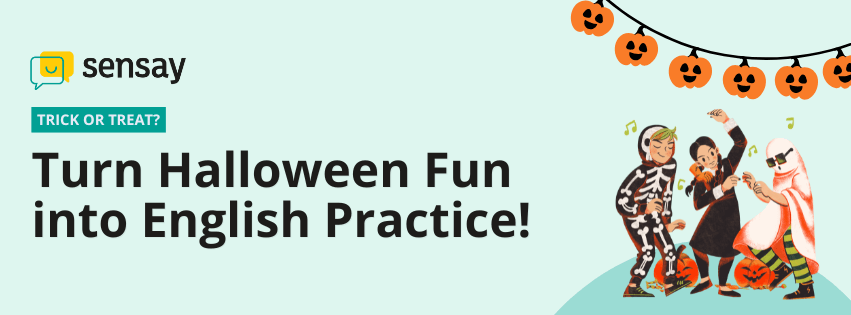Every late October, streets glow with orange lights, pumpkins line doorsteps, and children roam in costumes. But Halloween is more than trick-or-treating and candy. Behind the fun lies a rich history, fascinating cultural symbols, and excellent opportunities for English learning!
👻 The Origin of Halloween: From Samhain to Halloween
Over 2,000 years ago, the Celts in Europe celebrated Samhain on November 1st, marking the end of summer and the beginning of winter. They believed that on this night, the spirits of the dead returned to the world of the living. People lit bonfires, wore masks, and offered food to calm or confuse the wandering souls.
By the 8th century, the Christian Church turned this day into All Saints’ Day, and the night before became All Hallows’ Eve, which was later shortened to Halloween.
🎭 The Evolution of Halloween: From Souling to Guising
In medieval England, there were two special Halloween customs — souling and guising.
During souling, poor people went door to door asking for small cakes called soul cakes. In return, they would pray for the souls of the dead.
Guising was when young people dressed up in costumes and went around performing songs, reciting poems, or telling jokes in exchange for food, drinks, or coins.
In the 19th century, Irish and Scottish immigrants brought these traditions to America, and over time, they evolved into today’s Trick-or-Treat tradition. From a religious ritual to a celebration of creativity, Halloween has transformed through history into a day of community and fun.
🕸️ Halloween Symbols & Meanings
Every Halloween symbol tells a story and carries deep cultural meaning. Let’s explore their origins — and learn a few English words along the way:
- 🎃 Pumpkin – The most iconic Halloween symbol. In the past, people placed candles inside carved pumpkins to scare away evil spirits.
👉 We carved scary faces into pumpkins and lit them up for Halloween. - 👻 Ghost – Represents the belief that spirits return on Halloween night, symbolizing mystery and the supernatural.
👉 Children love dressing up as ghosts with white sheets. - 🧹 Witch – A classic symbol of magic and transformation, often representing power and mystery.
👉 The witch flew across the moonlit sky on her broomstick. - 🦇 Bat – Associated with the night and darkness, bats have become a sign of mystery and the unknown.
👉 Bats hung from the ceiling as spooky decorations. - 🕷️ Spider & Web – Once symbols of fear and traps, they now also represent patience and creativity.
👉 A giant spider web stretched across the haunted house entrance.
Though these symbols are now part of playful decorations, they still remind us that Halloween is not only about fun — it’s also about embracing the unknown.
💬 Learn English This Halloween: Sensay Halloween Practice Pack
Ready to make Halloween both fun and educational? Sensay’s Halloween Practice Pack offers themed speaking activities for all levels:
- A1–A2: picture readings and video Q&A for beginner confidence.
- B1–B2: short stories, situational discussions, and role-play.
- C1–C2: advanced readings and critical thinking questions for deeper expression.
From Trick or Treat to The Spirit of Halloween, every activity helps learners build fluency, vocabulary, and cultural awareness — while having fun.
👉 Log in to your Sensay teacher account to download the Halloween Practice Pack!
Don’t have an account yet? Sign up for free and get access to all our free seasonal practice packs.
✨ Spirit of Halloween
The true spirit of Halloween isn’t just about masks and candy. It’s about courage, creativity, and the joy of facing the unknown. Learning English is the same: a journey full of discovery, curiosity, and endless surprises.

